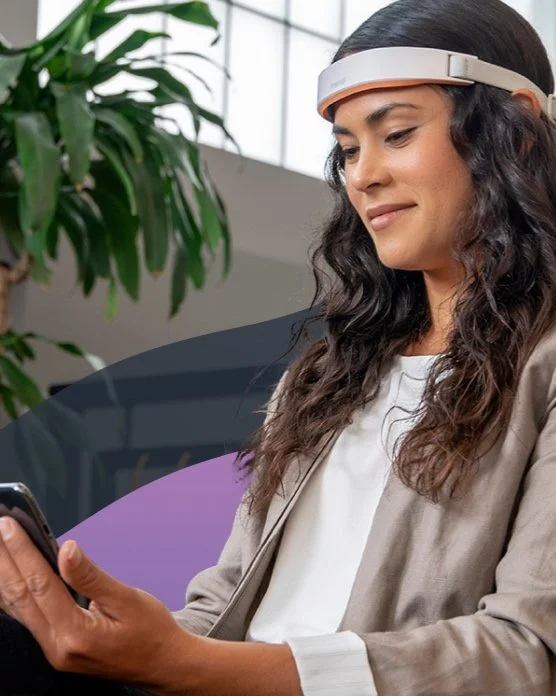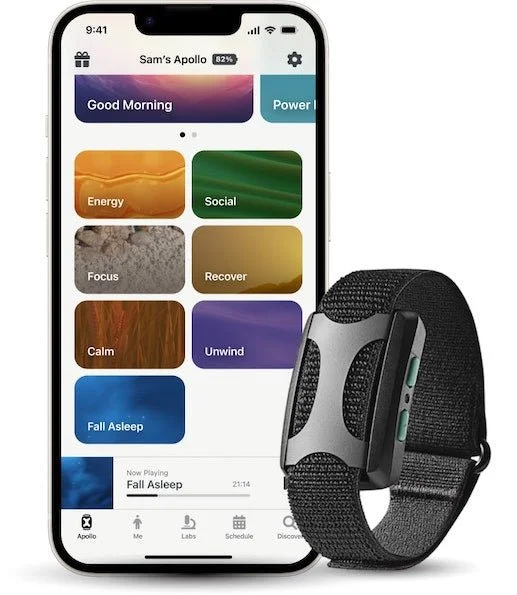Ways to ‘Focus’ on Health During the Stimulant Shortage
At the time of this writing, there’s a shortage of stimulants in the US… again. Those suffering with ADHD,, traumatic brain injury, and other “focus” problems — let’s call them “People with Attention Issues” — are once again in the position to wonder if/when their needed medications will be available.
From the doctor’s side, trying to get a stimulant into a patient’s hand can look like this:
I send a prescription — let’s say Adderall XR 30mg — to the patient’s pharmacy, and the pharmacy can’t fill it because of the nationwide backorder.
My staff calls the patient’s pharmacy: “We sent in Adderall 30mg for our patient; can you confirm you’re out-of-stock? Do you know when it will be available? No? Okay. Do you have 20’s and 10’s (to make 30mg)? How about 5’s and 15’s? Okay… how about Vyvanse 60mg? 30mg? Okay… what about Mydayis 50mg or 25mg? No… (sigh) Concerta 54mg? Ritalin LA 30mg? You do?! I need 60 of them… oh, you only have 10 in stock. How about Focalin… what? Oh, no Focalin, either.”
My staff then starts calling pharmacies within a 5 mile radius of the patient’s address, and repeats the process with each pharmacy. Then a 10 mile radius. You get the idea.
This happens for each patient, each time. And I’m not alone: I recently read that some doctor’s are hiring staff to just make these phone calls. Now my little clinic is competing with dozens of people (if not more!) doing the same thing we are.
As frustrating as that is for me and my staff, what are my patients supposed to do? True, the shortage is not much more than an irritant for some of my patients; but for others, it’s a serious impediment to daily function.
The information that follows is intended to offer novel interventions to those dealing with attentional issues, as well as those who don’t have ADD, TBI, etc.
Disclaimer: By providing these recommendations, I’m “painting with a broad brush,” understanding that your specific biology may need alternate interventions. In other words, this isn’t medical advice, and I’m simplifying very complex biochemical and environmental issues for the sake of ease. My intention is to equip you with means which you may not be aware of, encourage you to check the research for yourself, then talk with your functional medicine doctor before doing anything. If you don’t have a functional medicine doctor, I might be able to help. You can also try IFM.org to find a functional doc close to you or in a specialty that meets your needs.
Silencing Our Inner Lizard
But first, let’s understand the Lizard Brain. One of the jobs of our ancestors’ brains was to listen and look for trouble — eg, a lion stalking them in the bushes. A part of their brains was always on high alert, and it served more than one tribe well when someone’s Lizard Brain screamed, “LION!”… then they screamed “LION!” and everybody ran to safety (some of whom clearly made it!).
That’s all great; it got you and me here. However, listening for a lion in today’s world isn’t very helpful for most of us, largely because there aren’t any lions that want to eat us for dinner. But: some of us, for whatever reason, still have brains with really active “look-for-a-lion” tendencies, and unfortunately when we’re always looking for lions, our ability to concentrate — our “Focus Brain” — is suppressed. Why? Because it’s more important to run from a hungry lion than it is to focus on a spreadsheet, or a Zoom meeting, or whatever the boss is saying (that we didn’t want to hear anyway).
Stimulants tell our Focus Brains to get to work — and sometimes the stimulants are actually quite effective. The interventions below work it from the other side: they tell our Lizard Brains to relax, allowing our Focus Brain to come up for air and start Getting Things Done. And GTD is usually much more helpful in the modern world than looking for lions.
I suppose I could name this “Eight Interventions to a Better Life” or some such, but that’s been been done before. So… onward!
1. Distractions
This intervention is free: Reduce distractions (ie, stimulation). Turn down the lights — especially at night — as well as the volume on your AirPods, the brightness on your phone, TV, and computer. In fact, just turn off the phone, TV, and computer as often as you can while still maintaining peace in your home.
We evolved in a world that was mostly silent, and all the light and noise we’ve experienced since electricity began its rise to prominence in the late 18th century isn’t doing our Lizard Brains any favors. I could go on about circadian rhythms, exercise, grounding, sunshine, eliminating gluten, meditation, and the like, but if you’re here then you likely know those things already. If not, go research them; it will change your life.
2. focus@will
Most people can only concentrate for 20 minutes before needing a break. This is often due to distractions and boredom. focus@will improves concentration up to 400% with scientifically designed music.
focus@will is a streaming music service that uses features of sound discovered by neuroscientists to help you focus and retain information. It’s pretty simple, really: download the app or sign-up online; take a quiz; get curated stations with music clinically proven to calm your Lizard Brain, and let your Focus Brain puff out it’s chest and GTD.
The music isn’t necessarily the music you’d choose on the radio, though there are multiple stations and substations to choose from. It’s designed to play in the background. When you notice a song playing, that’s your Lizard Brain saying “LION!”, and it’s time to skip that track, telling the algorithm “that song was a lion,” and the service will learn to not play songs like that anymore.
Their studies reveal a 200-400% increase in focus time with most active users. The patients and family members I have that use focus@will swear by it.
➜ website | 7-day free trial - $55/year
3. Alpha-Stim
We have a whole page on this intervention.
4. Mendi
What if you could see your brain health improve in real-time? With Mendi, you can. Experience the benefits of neurofeedback training from the comfort of your own home.
Essentially, you’ll be tennis legend John McEnroe (hopefully without his theatrics): put on a headband that has brain monitoring sensors, then move a ball on a phone app… using your brain. Seriously.
You see, People with Attention Issues tend to have a lack of blood flow in their brain’s frontal lobe; there’s a lack of blood flow because there’s a lack of electric activity. It’s a vicious cycle: no activity, no blood; no blood, no activity. The Mendi system teaches your body to move blood to the frontal lobe and facilitate activity.
Again: check the research and studies to see if it’s worth the investment for you. In the future, I plan to have a Mendi in my office for patients to play with… I mean, test out!
➜ website | $299
5. Apollo
The Apollo wearable transforms how you feel through your sense of touch giving you more energy, less stress, a brighter mood, deeper relaxation & better flow.
Apollo, like the Mendi, is a wearable, but you can wear this one all the time, even to help with sleep. It can be worn on your wrist, ankle, side, or chest, and it actively does things to you instead of just reading what’s going on with you. The Apollo uses acupressure to send instructions to your vagus nerve; It “acts like a remote control for how you want to feel.” Feeling focussed is one option, yes, but so is sleep, calm and recovery… all significant parts of being able to focus.
Let me simplify: it’s been a bad day, you’re down, and someone you love rubs your back, and says, “It’s going to be okay…” That what Apollo does; it’s a surrogate for human touch, any time you need it.
For our purposes, the Pilot Study Validates the Apollo Wearable’s Positive Impact on Pediatrics with Anxiety and ADHD is be a good place to start your research.. Full disclosure: I’m relying on Asprey and the website’s studies again, as the Apollo model I ordered is so popular that it’s backordered… just like stimulants! Our Apollo arrived shortly after the writing of this article, and my husband and I have been using it daily ever since. Our experience is that it actually is a a remote control for how we want to feel. (My husband uses it primarily for sleep. Combined with TrueDark glasses, using the Apollo as recommended has bumped his REM and deep sleep from an average of 60 minutes to 90 minutes each per night.)
➜ website | $349 (get 10% off)
6. Qualia Mind
A premium nootropic for mental performance. This emerging scientific paradigm supports upregulation of multiple pathways and processes, identifies and takes advantage of nutrient synergies, and embraces the Goldilocks zone, or just-right amount, when it comes to ingredients and dosage.
That’s a lot of science-speak. Basically, Qualia Mind uses natural substances that promote a “systems approach” to cognitve function. Ie, Adderall may inject your Focus Brain with “steroids” that make it dominant for a time, but Qualia Mind’s systems approach naturally boosts your Focus Brain while quieting down our Lizard Brain. Long-term, this is a more desirable approach.
In my clinical practice, Qualia Mind has given some of my patients the focus effect of Vyvanse, for a much longer time, and without the finger-in-a-socket feeling. It’s also empowered some patients to discard their prescription medication altogether. Other patients… not so much. I encourage you to research this one, be patient, and talk to your functional doctor.
Qualia is also available as Qualia Mind Caffeine Free, and Neurohacker also offer's Qualia Mind’s little brother, Qualia Focus. I’ve had patients try each to find the one that works for them, and many have had real success.
People who are signed up to my FullScript dispensary already get a 15% discount on this (and every) product. If you’d like to try the Qualia for the first time, please contact us; we’ll create an account for you (no commitment required), and apply an additional 15% discount for your first bottle of either Qualia Mind, Qualia Mind Caffeine Free, or Qualia Focus… a 30% savings all around.
(The supplement protocols I have for ADHD and Traumatic Brain Injury may also prove helpful.)
7. Leela Quantum Energy Frequency Card
Now to the seriously “Woo-Woo” intervention (or, “World of Woo” as one patient affectionately calls it). I’ll start with a question:
Do you understand quantum physics?
All but 0.000001% of you just said “no.” Good. I don’t understand it either… in fact, I’ll bet there are only two people on the earth who do. What the rest of us understand, however, is that something happens when quantum energy is entangled with (ie, assigned to) a person, place, or thing. And that’s the case with the Leela Quantum Tech’s FOCUS card.
My staff actually has an entire email template, with links to podcasts, information, and explanatory videos from the people behind this quantum energy intervention. Here, I’ll keep it short: we don’t know how it works, but clinical studies show that it works. As best I can tell, quantum entanglement is used to attach proprietary “focus stuff” to an aluminum card, and when the card is close by, your body “hears” and acts on the focus stuff. Or something. Then, voilá! You focus better, tune out the Lion, etc. That’s some serious Woo.
(On a personal note, my husband keeps this card on his person every waking minute. It’s made a noticeable difference in his TBI symptoms and his ability to keep up with life… and brilliant doctors! 😉)
Consider reading Leela Q’s PDF on Frequency Cards, which is a little more explanatory. Then, try visiting the Leela Quantum Energy Frequency Card page, and choosing “FOCUS Card” from the dropdown menu mid-page. It’s designed for people with ADHD. Friends, family, and patients who’ve investigated the card say that it helps greatly with ADHD symptoms… some even saying it cured them altogether.
I emphatically implore you to talk to someone in-the-know before venturing into Quantum Tech. I’ve had patients try other quantum-based interventions with both favorable and unfavorable results. This is real energy; it really will affect your body. Be careful.
8. Adopt-a-Terrier
Adopt a Jack Russell Terrier, and name it Gilligan.
It won’t actually help with your Attention Issues, but it will make you grateful that your Attention Issues are not as bad as Gilligan’s, and gratitude is the mother of happiness. 😏
Hyperactive Jack Russel terrier after bath
Okay! We made it. To summarize:
Finding the root cause of any ailment is always the best approach (and often the costliest (because it’s not subsidized), but there you have it).
Prescription medicines can be helpful, but they don’t have to be the only things helpful… and sometimes we find that they aren’t needed at all.
Trying one or more of the interventions above may actually be helpful, even life-changing, depending on your unique biology.
Talk with your functional medicine doctor about the research you’ve done — you must do your own research — what you think is best for you, and partner with him or her on moving in that direction. If they won’t partner with you, find another doctor.







